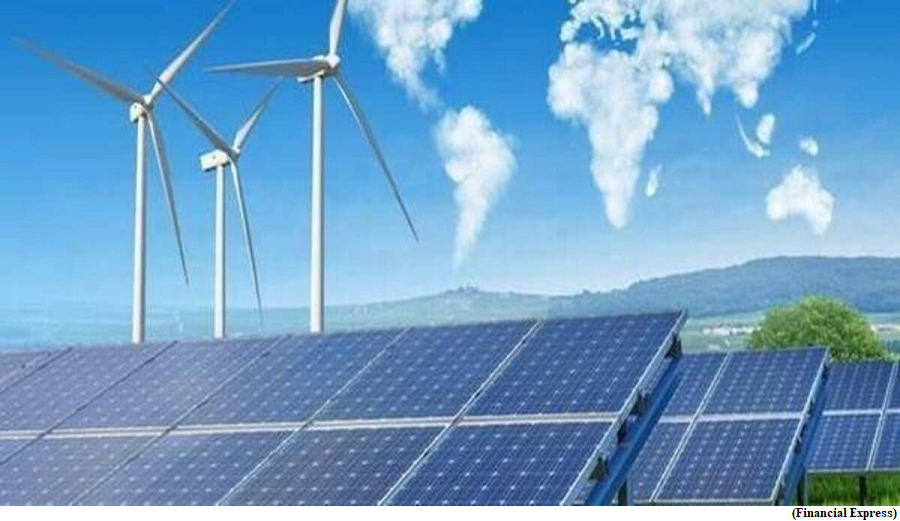Pumped storage key to energy transition (GS Paper 3, Economy)

Context:
- Recently, the government of India issued guidelines on Pumped Storage Projects (PSP).
Why it matters?
- Transitioning to clean energy requires managing the intermittent nature of renewable energy (RE) generation. Therefore, sources of flexible power, i.e., those with a capacity to get ramped up and down fast, with quick start/stop, are essential.
- Typically, the solution is to add storage. Therefore, the ability to meet the RE target under the Nationally Determined Contributions (NDC) commitments will depend on storage.
Queries in the context of storage:
- The periodic assessment of resource adequacy and the optimum level of storage.
- Should technologies be selected purely on the least-cost considerations?
- What should be the procurement strategy?
PSP potential:
- The Draft National Electricity Plan (DNEP) suggests PSP capacity of 18.8 GW and five-hour battery storage of 51.5 GW by 2032. However, the rationale for a greater reliance on batteries is not presented.
- It is important to conduct a thorough cost-benefit analysis of various technologies. Such an analysis should internalise externalities, such as the environmental cost of different options, including potential methane emission from reservoirs, and other considerations such as employment generation, Make in India, etc.
- It is likely that PSPs are a better option after internalising externalities, given low maturity of waste management, including battery recycling, in the country.
Competitive bidding:
- PSPs also provide ancillary services such as inertial support, black start capability, reactive support, and reserves. PSPs should therefore have a higher priority if the overall cost-benefit economics is better, relative to batteries.
- Recent bids for storage indicate that PSPs may rank higher even on a purely financial cost-benefit basis. Now that transmission capacity has expanded, shared PSPs with Nepal, Bhutan can also be explored.
- The guidelines provide for competitive bidding, which is welcome. The guidelines provide for a two-stage bidding process. However, bidding is practically difficult for hydro projects due to uniqueness of site, etc, making ex ante cost estimation challenging.
Alternative solutions:
- Initial investigations maybe done by a public entity, and results shared with all prospective bidders, similar to thermal UMPP case 2 bidding. Alternatively, individual entities maybe allowed to prepare initial proposals under the Swiss Challenge methodology.
- Under this approach, the originator of the proposal conducts the initial exploration. The proposal is then opened for counter offers. The winning bidder pays for the cost of initial exploration in case the counteroffer is accepted. The guidelines need to be elaborated to enable such options.
- Further, the guidelines provide for projects to be awarded on a nomination basis to PSUs. However, this should be done only if benefits of a particular project exceed cost and the competitive bidding does not evince any interest.
Dedicated focus:
- Since the clean energy transition is crucial to India’s NDC targets, PSPs require a dedicated focus, particularly the newer technologies like off-river pure PSPs, variable frequency drive, etc. Therefore, a dedicated PSP Unit, within a body like the Central Electricity Authority, may be constituted.
- Such an arrangement will ensure co-ordination and focus towards prioritized individual PSP projects. Since different PSPs will encounter varying challenges, the PSP Unit can prioritise potential projects based on location, size, geology, existing reservoir, availability of evacuation infrastructure etc.
- Prioritisation is crucial as development of a PSP can take around five years. PSP Unit should also evaluate experience from non-operational PSP projects (Panchet, Sardar Sarovar etc.) and integrate learnings on an ongoing basis.
Energy Storage Obligation (ESO):
- Different technologies can play different roles. Batteries, for example, are better suited for last-mile storage, given the opportunities to optimise capacity and use in applications such as home solar systems, electric vehicles, and the ability to provide back-up power, thereby improving quality of supply.
- Therefore, PSPs and batteries are complementary, with PSPs better suited for bulk storage and batteries relevant for end-of-the grid storage.
- Beyond the individual technologies, the overall storage requirement should be assessed considering the existing storage or flexible power available in the system. For example, existing hydropower stations with dams have some flexibility to dispatch energy based on system requirements. Likewise, stranded gas-powered stations can be repurposed at a relatively low cost.
- Therefore, the Energy Storage Obligation (ESO), should be based on detailed analysis, factoring the available flexibility in existing resources.
- ESO, if warranted, should be introduced by the appropriate regulatory commission under a specific provision of the Electricity Act, like the Renewable Purchase Obligation.
Way Forward:
- PSPs are crucial for smooth and swift energy transition and can be an effective solution to faster penetration of renewables, thereby enabling meeting India’s commitments to fight climate change.
- With so much at stake, it is crucial to prioritise and accelerate PSPs much more than in the past.
- The key to unlocking the potential of PSPs may well be the Swiss Challenge route combined with a dedicated PSP Unit with single minded determination.


